Introduction
Navigating the complexities of sensory processing issues can be a daunting task, especially for parents and caregivers of autistic children. These challenges arise from how the brain interprets sensory information, often leading to unique and sometimes overwhelming experiences. Understanding these sensory processing patterns is crucial for providing the right support and creating environments where children can thrive.
This article delves into the nature of sensory issues, exploring the eight sensory systems, the differences between hypersensitivity and hyposensitivity, and their impact on daily life. It also offers practical strategies for managing these challenges, including sensory diets and integration therapy, while highlighting the importance of community support and tailored interventions. By gaining a deeper understanding and employing effective strategies, parents can empower their children to navigate their sensory world more comfortably and confidently.
What Are Sensory Issues?
Processing issues involve challenges in how the brain interprets information from the environment. This can be particularly pronounced for autistic individuals, who may experience sights, sounds, textures, tastes, and smells in unique ways. The sensory experiences of autistic individuals and young people have been systematically reviewed, revealing that their brains often interpret sensory input differently. This can result in either overwhelming sensations or a lack of response to stimuli that others might barely notice.
A thematic synthesis of qualitative research has helped to categorize these experiences into descriptive and analytical themes. For instance, some individuals with autism may be highly sensitive to certain sounds, leading to distress in environments that others find normal. Conversely, they might show minimal reaction to stimuli that typically capture attention, such as strong odors or bright lights.
This thorough understanding has been accomplished through line-by-line coding of data from numerous studies, highlighting the lived experiences of autistic youth. The resulting themes and subthemes provide valuable insights, supported by direct quotes from these young individuals. This method highlights the significance of acknowledging and valuing these distinct perceptual patterns to enhance assistance for autistic children in their everyday experiences.
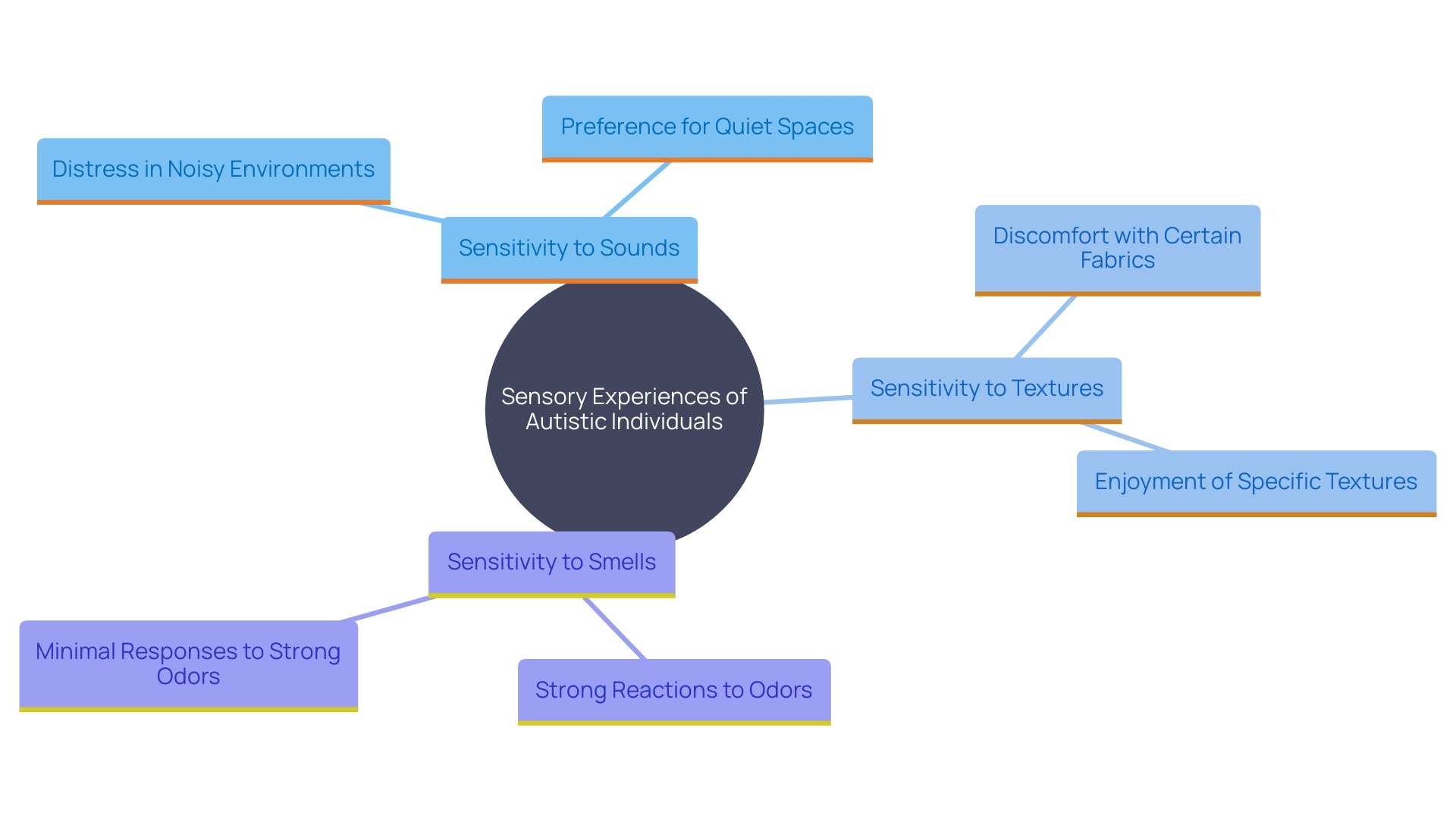
The Eight Sensory Systems
The human body has eight perception systems that help us navigate the world. These include the visual, auditory, tactile, olfactory, gustatory, vestibular, proprioceptive, and interoceptive systems. Each plays a crucial role in how we perceive and interact with our surroundings. For people with sensory integration difficulties, problems in one or more of these systems can greatly affect their daily functioning.
Research by Thomas and Harden (2008) provides insights into these perceptual experiences from the perspectives of autistic children and young people. Their systematic review approach involves line-by-line coding of qualitative data to generate descriptive and analytical themes. This method provides a nuanced understanding of how perception processing affects autistic individuals in various contexts, such as school and home environments.
Comprehending these perceptual challenges is essential for creating supportive and adaptive strategies. For instance, Joanna Grace, a professional on the autism spectrum, highlights the significance of taking into account sensory needs when creating environments or educational initiatives. She emphasizes that processing disorders can change how individuals perceive and respond to their surroundings, making it essential to customize interventions to their distinct perceptual profiles.
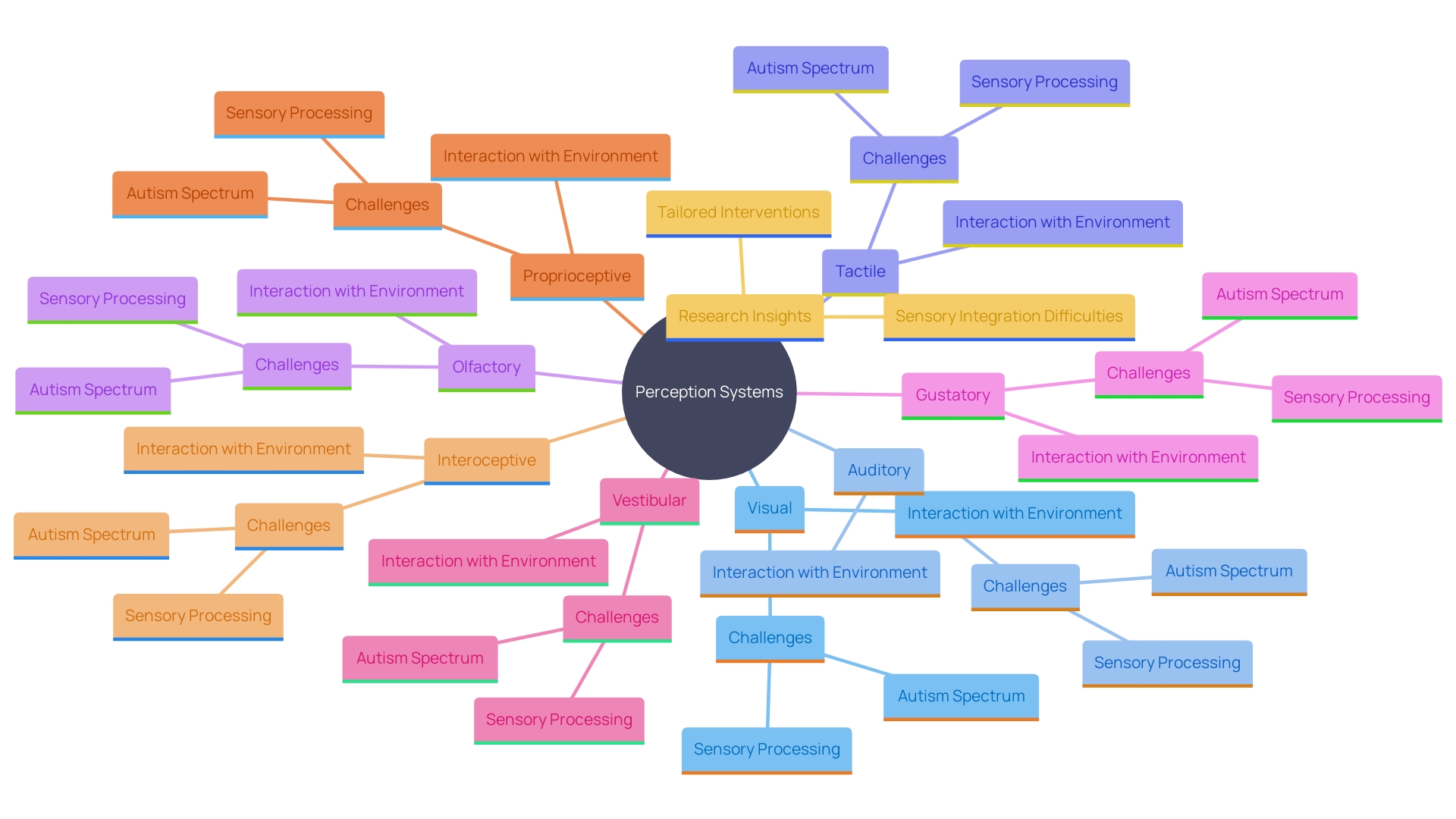
Hypersensitivity vs. Hyposensitivity
Hypersensitivity in youngsters with autism appears as a strong response to environmental stimuli, frequently resulting in notable discomfort or distress. This might include a child covering their ears at loud noises or refusing to wear certain clothing due to the texture of the fabric. 'These reactions are not arbitrary but arise from a genuine perceptual overload that can disrupt their daily life.'.
Conversely, hyposensitivity involves a reduced response to stimuli, prompting individuals to seek out intense sensations to feel more grounded. This might be noticed in behaviors such as spinning, jumping, or other activities that offer strong perceptual feedback. Comprehending these perceptual variations is essential for establishing nurturing settings that accommodate the distinct requirements of every child.
Impact of Sensory Issues on Daily Life
Sensory processing issues can profoundly affect daily routines and social interactions for individuals with autism. They may experience heightened or diminished sensitivity to stimuli, making environments like noisy classrooms or crowded places particularly challenging. This hypersensitivity or hyposensitivity often leads to anxiety, frustration, and behavioral challenges, which can ripple through family dynamics and social relationships.
According to recent statistics, autism is the most prevalent neurodevelopmental disorder in the U.S., impacting an estimated one out of 36 youths. Numerous individuals with autism face challenges with distinct perceptual characteristics, such as variations in reactivity to touch, sounds, and sights, or difficulty handling multiple perceptual inputs at the same time. This can result in significant stress and discomfort in everyday situations.
A thematic synthesis of qualitative research by Thomas and Harden (2008) highlights that understanding perceptual experiences from the perspectives of autistic children and young people is crucial. These personal insights can be organized into descriptive and analytical themes to better understand the lived experiences and develop effective support strategies. This approach highlights the significance of taking into account the distinct perceptual profiles of individuals with autism to cultivate more inclusive and supportive environments.
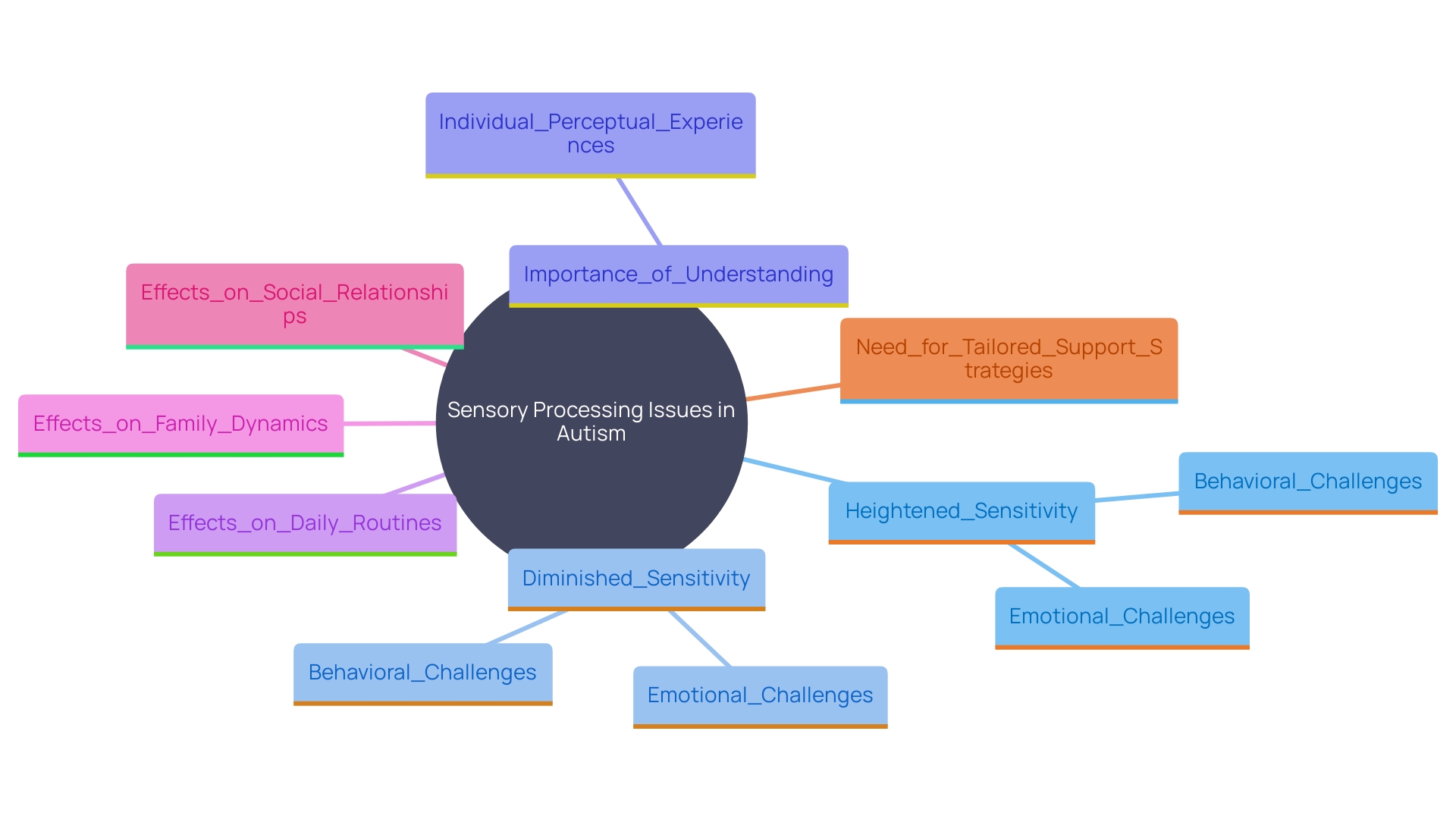
Strategies for Managing Sensory Issues
Addressing processing challenges in youngsters with autism requires applying diverse approaches customized to their individual needs. Creating a sensory-friendly environment at home can significantly reduce sensory overload. This means considering factors like lighting, noise levels, and tactile stimuli. For instance, using noise-canceling headphones can help minimize auditory distractions, providing a calmer environment for the young one.
Establishing a predictable routine is another effective strategy. Consistency helps children feel secure and reduces anxiety caused by unexpected changes. Furthermore, including breaks for stimuli in their daily routine can enable them to handle their needs in a proactive manner. These breaks might include activities like jumping on a trampoline, swinging, or using a weighted blanket, all of which provide different types of input that can be calming.
Self-regulation methods are essential for assisting young ones in managing their perceptual difficulties. Instruction techniques like deep breathing, employing fidget devices, or engaging in mindfulness can help youngsters to more effectively manage their reactions to stimuli. It’s crucial to keep in mind that these strategies ought to be tailored, as each young person's perception characteristics are distinct.
Integrating these methods not only alleviates overwhelming stimuli but also improves the young person's capacity to interact with their surroundings more easily. As Meryl Alper points out, comprehending and directly responding to the needs of youth with autism is vital for their growth and welfare. By establishing nurturing and flexible settings, we can assist kids with autism to flourish in spite of the challenges they encounter.
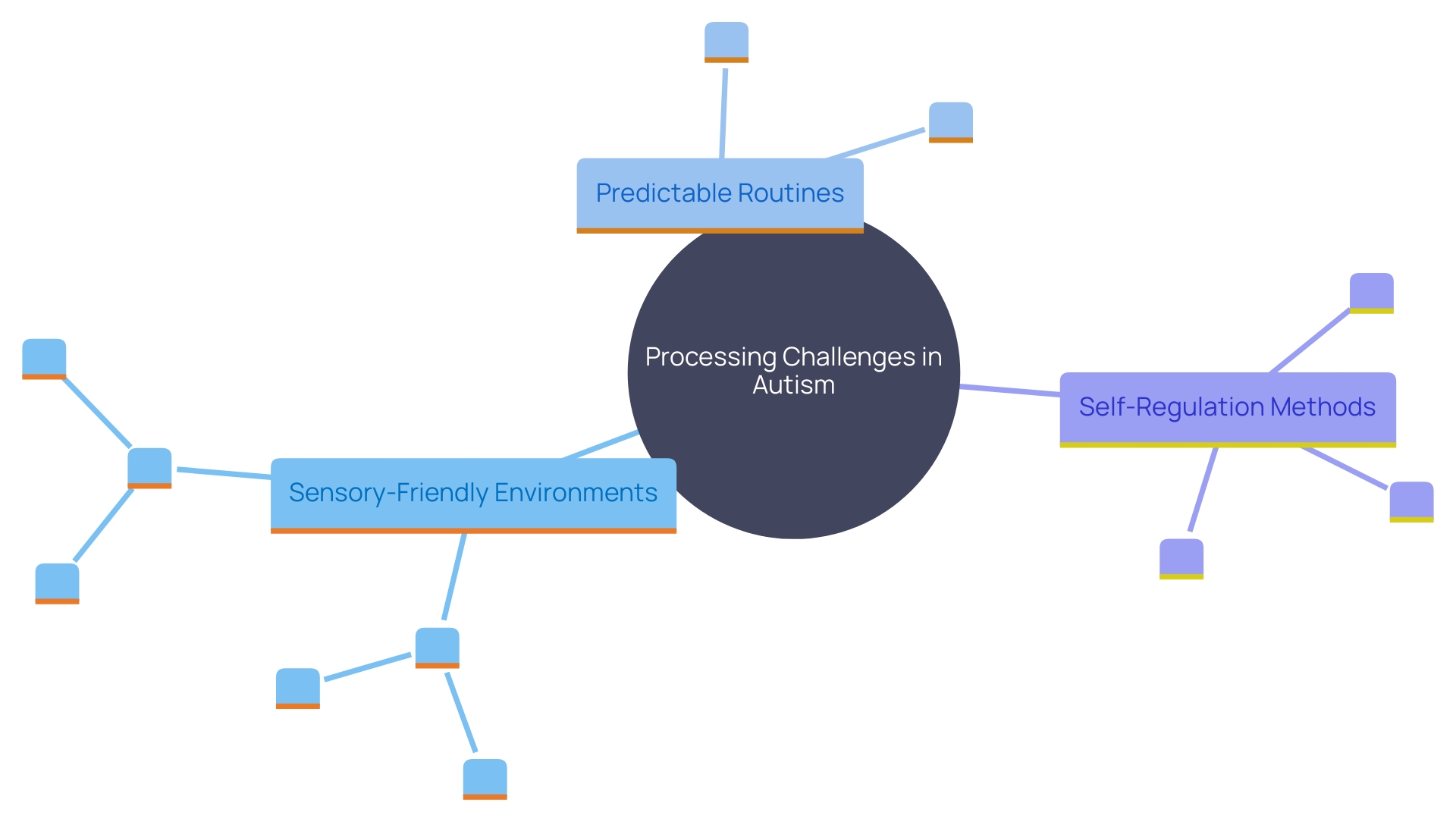
Sensory Diets and Sensory Integration Therapy
A customized plan is a tailored strategy that incorporates particular activities to help individuals in self-regulating and meeting their sensory requirements throughout the day. Formulated through organized examination, as suggested by Thomas and Harden (2008), this method guarantees that each task is customized to the distinct perceptual experiences of autistic individuals and young persons. Integration therapy, on the other hand, emphasizes improving the brain's ability to handle information from the senses through guided play and organized activities. This method, validated by numerous studies and expert analyses, aims to improve daily comfort and functioning. By incorporating these strategies, parents can better support their children's perceptual needs, promoting well-being and active participation in various environments.
Living with Sensory Processing Disorder (SPD)
Navigating life with perceptual challenges requires both comprehension and steadfast assistance. Family members and caregivers must be attentive to the signs of perceptual challenges and respond with compassion. Creating a nurturing community where experiences can be shared and resources readily accessed is vital. This feeling of belonging enables people and their families to handle the intricacies of perception more efficiently.
Research emphasizes the complex connections between motor, perceptual, and cognitive processes in everyday tasks, highlighting the necessity for supportive settings customized to the unique requirements of neurodivergent people. For example, creating environments that accommodate sensitivities can greatly enhance the quality of life for individuals with processing disorders. This approach transforms homes into personalized havens, ensuring functionality and comfort.
Furthermore, initiatives such as the Kevin and Avonte Program demonstrate the significance of proactive actions in protecting and assisting people with perceptual challenges. This initiative has allocated $10.3 million to enhance public awareness, build community partnerships, and develop emergency protocols to prevent and address wandering behaviors among those with developmental disabilities.
As we continue to advocate for better support systems, it's crucial to recognize the significant impact of caregiving on both individuals and families. Advocacy groups like AARP are pushing for policies that address the economic and emotional burdens of caregiving, emphasizing the need for comprehensive long-term care solutions.
By fostering a community that shares knowledge, resources, and support, we can better navigate the challenges of sensory processing issues and empower families to thrive.
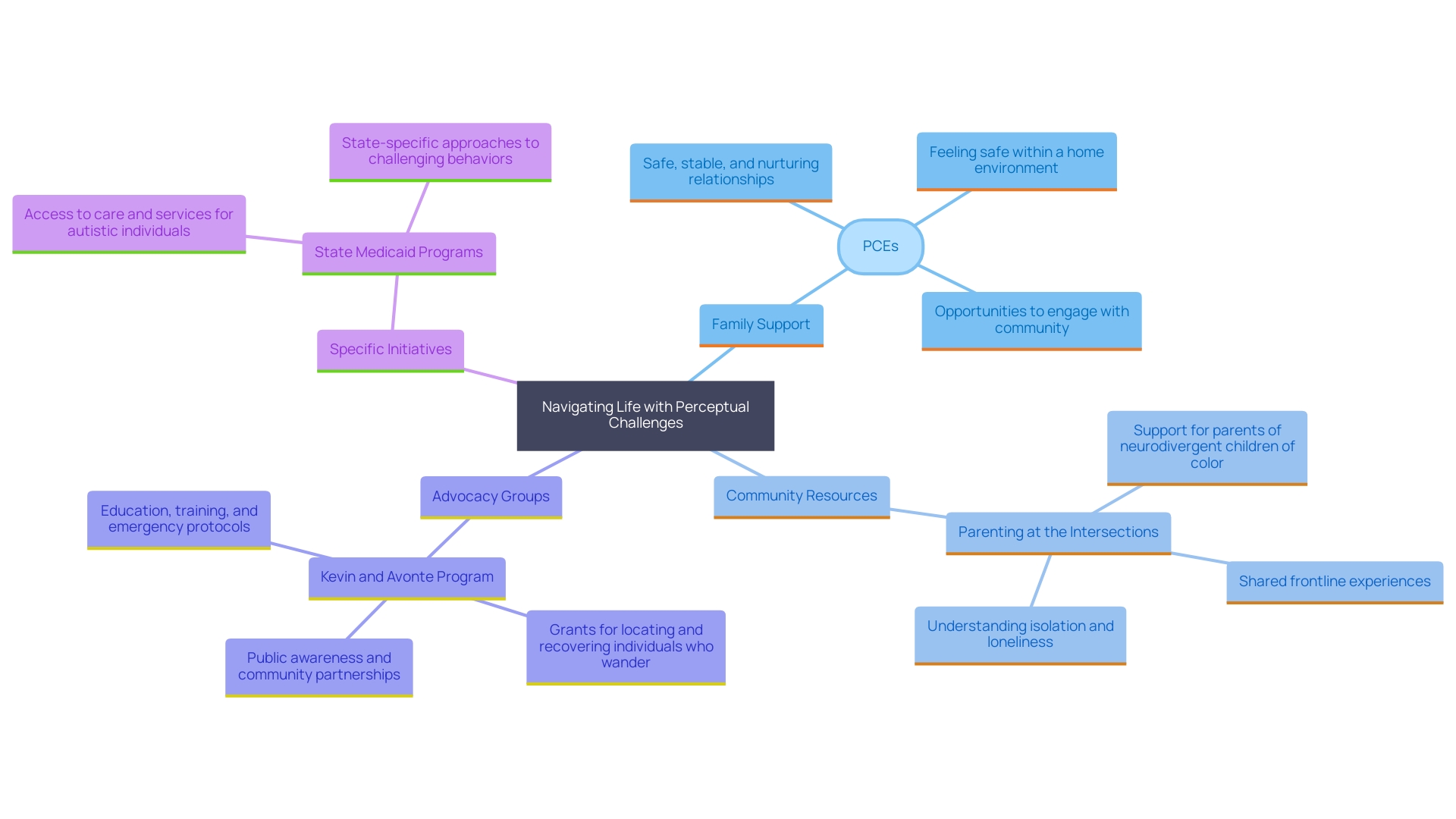
Conclusion
Understanding and addressing sensory processing issues is paramount for the well-being of autistic children and their families. These challenges stem from the unique ways in which sensory information is interpreted, leading to experiences that can be both overwhelming and underwhelming. By recognizing the eight sensory systems and the differences between hypersensitivity and hyposensitivity, caregivers can tailor their approaches to meet each child's specific needs.
Implementing practical strategies such as creating sensory-friendly environments, establishing predictable routines, and utilizing sensory diets can significantly enhance daily functioning. Incorporating sensory integration therapy and self-regulation techniques empowers children to navigate their sensory landscapes more effectively. This proactive approach not only alleviates sensory overload but also fosters a sense of comfort and security, enabling children to engage more fully with their surroundings.
The journey of living with sensory processing disorder requires ongoing understanding, compassion, and community support. By cultivating environments that prioritize sensory needs and advocating for comprehensive resources, families can transform challenges into opportunities for growth. Through collaboration and shared knowledge, it is possible to create a nurturing atmosphere where children with sensory processing issues can thrive, ultimately leading to improved quality of life for both individuals and their families.




